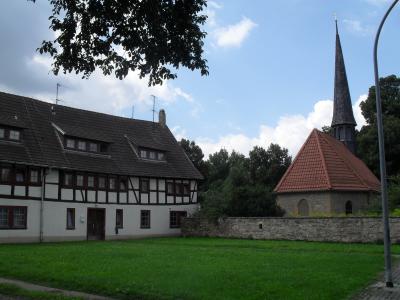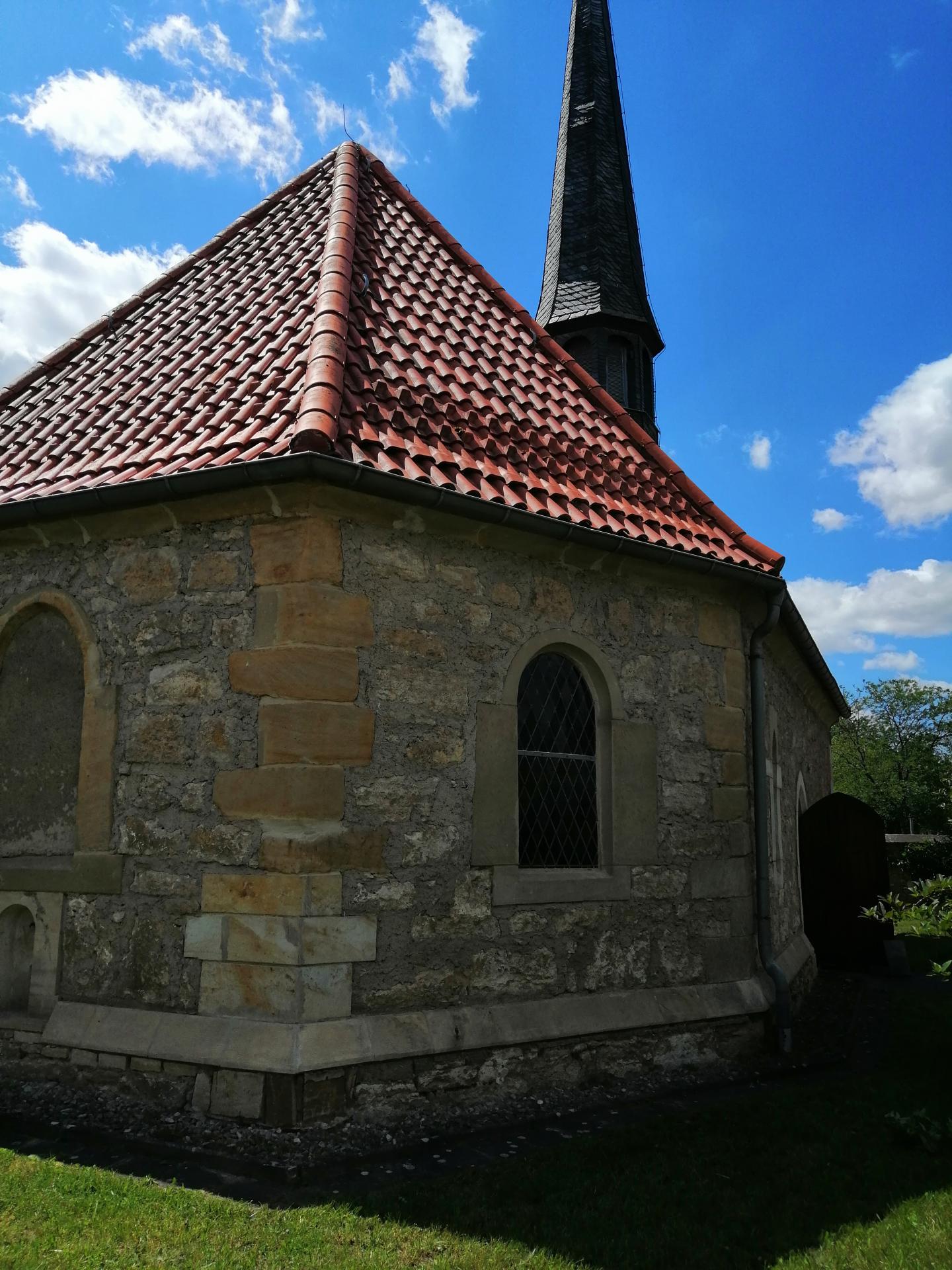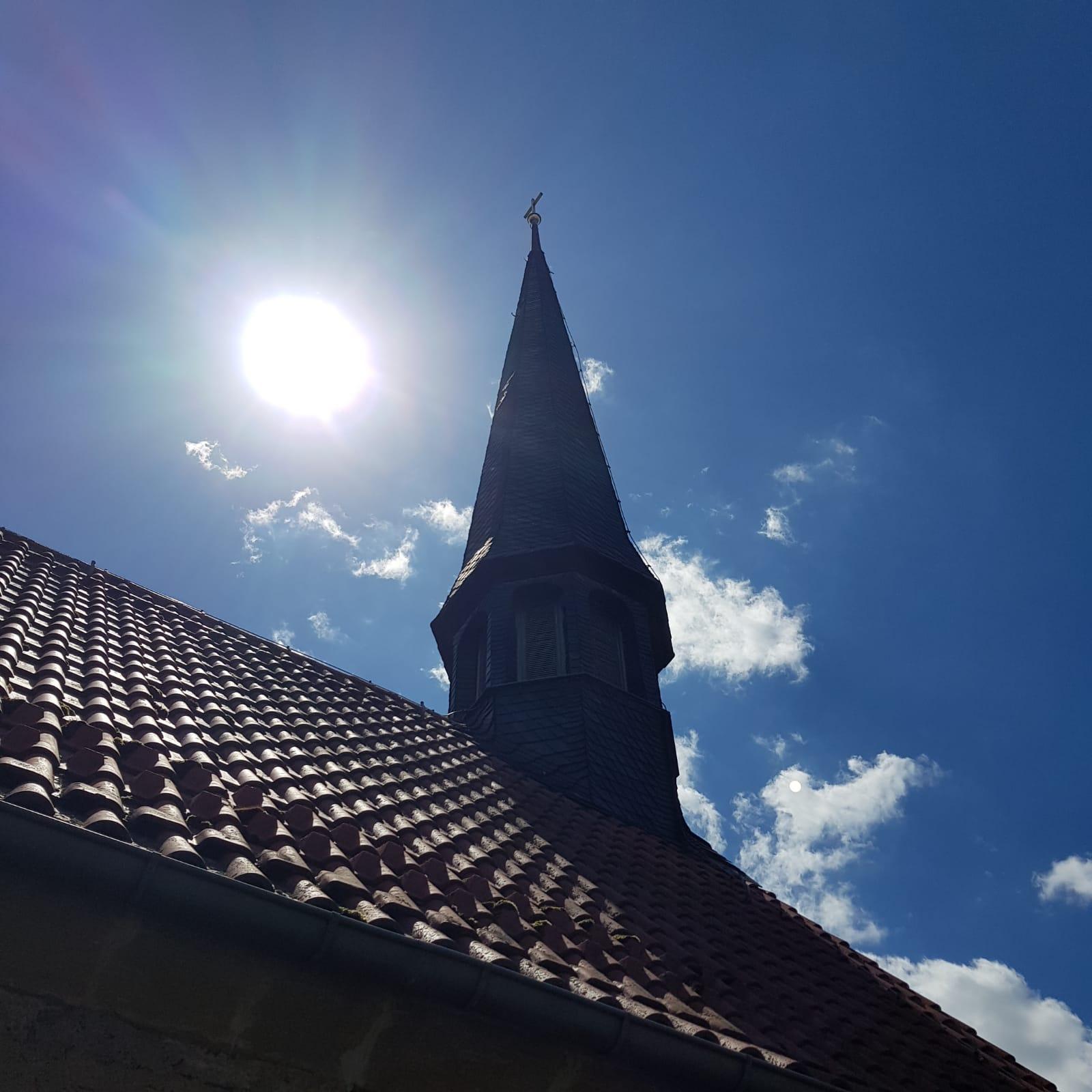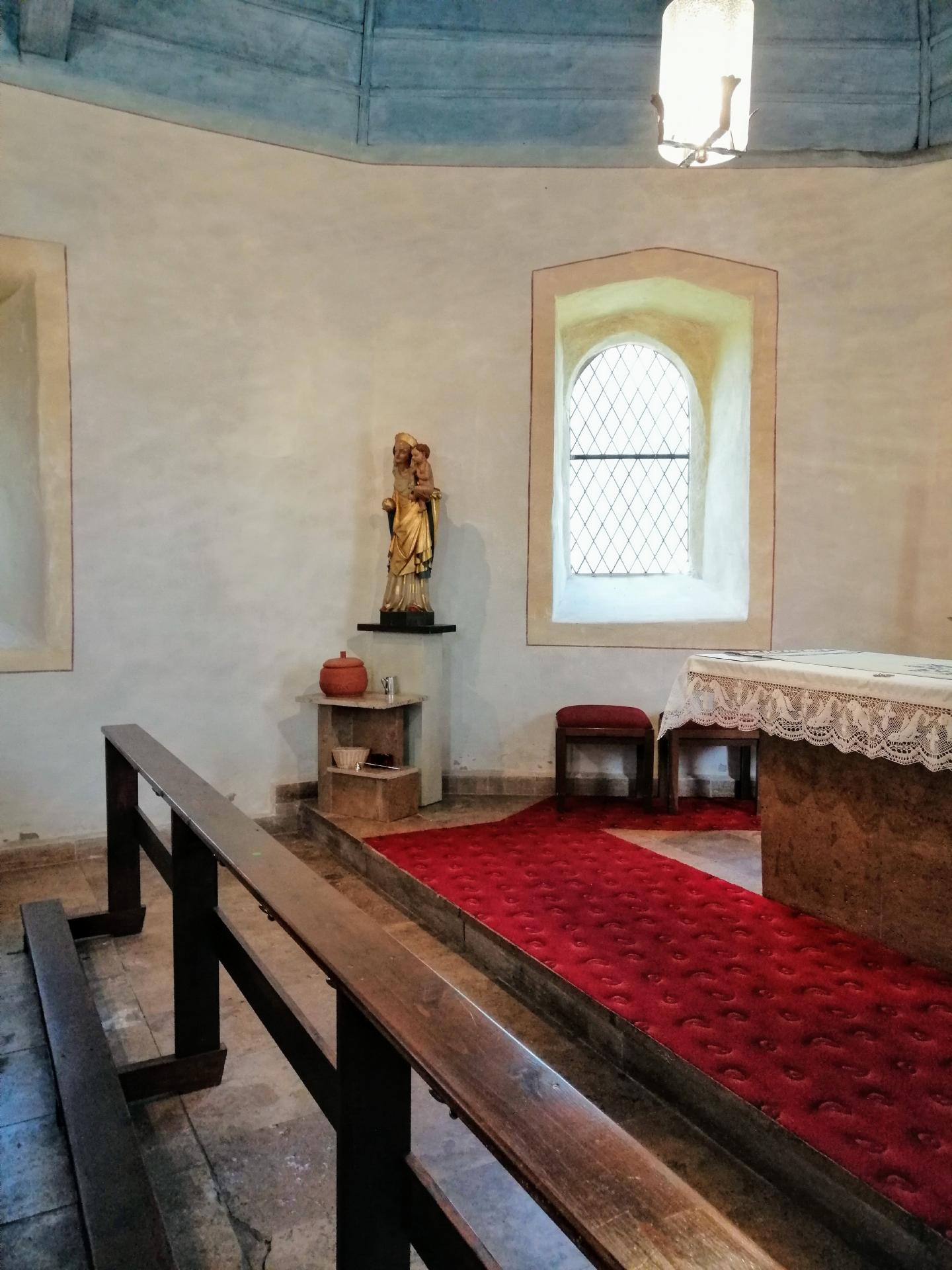"St. Spiritus" - Hospitalskirche
 Spitalskirche mit mittelalterlichem Spital
Spitalskirche mit mittelalterlichem Spital
-
mittelalterliche Erbauungszeit - genaues Datum unbekannt
-
1506 erstmals erwähnt als Kapelle mit Hospital
-
1815 Nutzung als Lazarett für französische Soldaten
1919 katholische Gemeindekirche
Die Hospitalskirche "St. Spiritus" (Heilig-Geist-Kirche) ist heute die kleinste der drei noch vorhandenen Kirchen in Bad Tennstedt und wird im Volksmund auch "Spittelskirche "genannt.Wie ihr volkstümlicher Name es ausdrückt, bildete die Kirche gemeinsam mit dem daneben angrenzenden Gebäude in früherer Zeit einen zusammenhängenden Komplex. Wann genau die Gründung von Kapelle und Hospiital erfolgte, lässt sich nur vermuten. Die Umwidmung der Kapelle in eine Kirche ist ebenfalls urkundlich nicht belegt.Kapelle und Hospital werden in Tennstedts Chronik erstmals im Jahr 1506 als "Leprosorium" bzw. "Hospitalis extra muros" - also Hospital außerhalb der Mauern der Stadt - erwähnt. In einem Leprosorium wurden vom Mittelalter bis in die Neuzeit an Lepra erkrankte Menschen vom Rest der Bevölkerung isoliert. Ab 1623 wurde das Hospital als Siechenhaus bezeichnet, was bedeutet, dass weiterhin dahinsiechende Kranke mit besonders gefürchteten Krankheiten in dem Komplex untergebracht waren.Im großen Stadtbrand 1685 wurden sowohl Hospital als auch die Kirche ein Opfer der Flammen. Beide wurden wieder aufgebaut. Die eingehauene Jahreszahl 1711 im Bogen des Westfensters könnte auf die Fertigstellung der Kirche hinweisen. 1759 und 1772 fanden Ausbesserungsarbeiten am Dachreiter statt und 1775 wurde das Gewölbe repariert. 1815 wurde die Kirche als Lazarett für verwundete französische Soldaten genutzt und dafür der gesamte Innenraum ausgeräumt. 1817 war der Zustand der Kirche sehr schlecht und man dachte über einen möglichen Abriss mit Wiederaufbau nach. Dafür wären 3000 Taler erforderlich gewesen. Die Stadt als Eigentümer bevorzugte jedoch die Reparatur und der Stadtrat gab für diese 800 Taler frei.1888 erfolgte eine Neugestaltung des Innenraumes. Ab 1919 erlaubte der Tennstedter Stadtrat die Nutzung der Kirche für den katholischen Gottesdienst. Die Miete betrug 3 Mark und wurde in die Hospitalkasse eingezahlt. Im Kriegsjahr 1942 wurden die beiden Glocken für Rüstungszwecke benötigt und abgenommen.1975 stellte das Erfurter Dombauamt der katholischen Gemeinde eine im Jahr 1465 gegossene Glocke zur Verfügung. Zwischen 1990 und 1993 wurden Hospital und Kirche umfassend saniert.Hospital und Kirche waren immer im Besitz der Stadt. Im Laufe der Jahrhunderte erfuhr das Hospital eine vielfältige Nutzung. Vom mittelalterlichen Leprosorium über Siechenhaus, Spital und Altersheim bis hin zu Wohnzwecken wurde das Gebäude genutzt. Derzeit steht es leer. Es besteht derzeit die Überlegung, das ehemalige Spital zukünftig als Heimatmuseum zu nutzen. Erste Vorarbeiten laufen.Bis heute wird "St. Spiritus" von der kleinen katholischen Gemeinde unserer Stadt für ihre Andachten genutzt.
Hospitalskirche "St. Spiritus" (Holy Ghost Church)
• Medieval edification time - exact date unknown
• first mentioned in the chronicle as a chapel with Hospital 1506
• used as a hospital for French soldiers in 1815
• first comprehensive renovation in 1817
• Catholic parish church from 1919
The Hospitalskirche "St. Spiritus" (Holy Ghost Church) is today the smallest of the three remaining churches of Bad Tennstedt and is popularly called "Spittelskirche". This old dialect word means Spital = hospital. The church, together with the adjoining building in former times, formed a coherent complex. When exactly the foundation of the chapel and hospital took place can only be assumed. The rededication of the chapel in a church is documented, unfortunately, not proven.
Chapel and Hospital are mentioned in Tennstedt's chronicle for the first time in 1506 as "Leprosorium" or "Hospitalis extra muros", i.e. Hospital outside the walls of the city. In a Leprosorium, people suffering from leprosy were isolated from the rest of the population from the Middle Ages to modern times.
As of 1623, the hospital was referred to as the infirmary, meaning that people still dying of the disease were kept in the complex with particularly dreaded illnesses.
In the great fire in 1685 both Hospital and the Church were victims of the flames. Both were rebuilt. The carved year 1711 in the arch of the west window could indicate the completion of the church. In 1759 and 1772 repair work was carried out on the roof ridge and in 1775 the vault was repaired. In 1815, the church was used as a hospital for wounded French soldiers and for the entire interior cleared away. In 1817, the condition of the church was very bad and people thought about a possible demolition with reconstruction. This would have required 3000 Talers (Taler were an old German currency). However, the city as the owner preferred the repair and the City Council released for this 800 Talers. 1888 was a redesign of the interior. From 1919, the Tennstedter city council allowed the use of the church for Catholic worship. The rent was 3 Marks (another former German currency) and was paid into the hospital fund.
In the war year 1942, both bells were taken for armaments purposes. In 1975, the Erfurt Cathedral Office provided the Catholic community with a bell cast in 1465. Between 1990 and 1993, the hospital and church were extensively renovated.
Hospital and church were always owned by the city. Over the centuries, the hospital has been widely used. From the medieval leprosarium on infirmary, hospital and nursing home to residential purposes, it was used. The building is currently empty and waiting for a comprehensive renovation.
Today, St. Spiritus church still serves the small Catholic community of our city for their devotions. The times for services can be seen by the visitor on the notice board of the church.

St. Spiritus

Kirchturm im Sonnenlicht

Altarbereich







